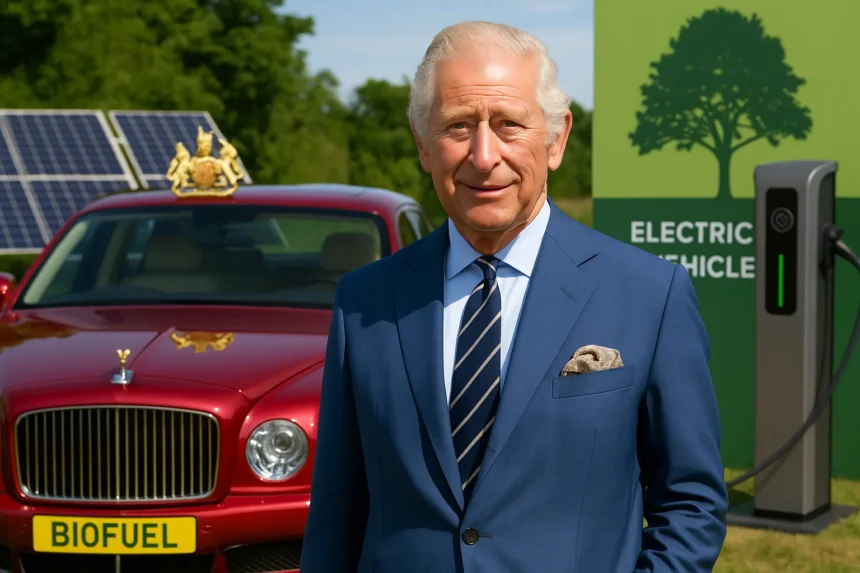Travel isn’t just about destinations and experiences but also about footprints. For many travellers, sustainable travel evokes images of solar-powered lodges, local cultural immersion, and carbon offset programs. But what if even the highest echelons of tradition royalty took bold steps toward greener travel? In the reign of King Charles III, we witness a compelling story of how a monarch is weaving environmental awareness into royal journeys.
In this article, we’ll dive into King Charles sustainable travel initiatives, the campaigns, innovations, and symbolic gestures meant to shrink the carbon imprint of royal movement. Along the way, we’ll reflect on how these moves could inspire everyday travellers.
A Royal Long Game: Charles’s Green Roots
Long before ascending the throne, Charles (as Prince of Wales) was deeply committed to environmental causes. He launched the Sustainable Markets Initiative (SMI), which urges private sector actors to align business with nature and people. Another hallmark effort was the Prince’s Rainforests Project, founded in 2007, to raise awareness about deforestation and promote sustainable land use worldwide.
These earlier efforts laid a foundation of credibility. So when Charles became King, some of that ethos naturally extended into how the royal household travels.
The Royal Fleet Goes Green
Biofuel-Conversion of State Cars
One of the more concrete, tangible King Charles sustainable travel initiatives is the conversion of the two state Bentleys into vehicles capable of running on biofuel. This is meant as a transitional step, with the ambition that eventually the state car fleet will become fully electric.
Helicopters & Sustainable Aviation Fuel
Royal helicopters are also part of the green upgrade plan. Two older 15-year-old helicopters are slated to be replaced with models that can use up to 50% sustainable aviation fuel (SAF). To support that, a facility for sustainable aviation fuel storage is being installed at RAF Odiham, with a permanent tank anticipated by 2025 or 2026.
Solar & Eco-Upgrades at Royal Estates
Beyond transport, the King’s household is greening its static assets. For instance:
- Windsor Castle and other royal properties are being fitted with solar panels.
- Electric replicas are replacing oil lanterns in Buckingham Palace to preserve the aesthetic while cutting fossil fuel use.
- On the Sandringham Estate, planning permission has been submitted for a 2,000-panel solar farm (covering ~2.3 hectares) to generate about 2.1 MW, supplying estate needs and feeding excess energy to the grid.
These building-side measures reinforce that sustainable travel is more than just moving from A to B it’s also about cleaner energy where you arrive.
Symbolic Journeys & Eco Messaging
Sometimes the statement is in the act. During a visit to London’s super sewer (the Tideway Tunnel project), King Charles travelled via a hybrid Uber boat on the Thames, meeting with environmentally themed transport initiatives.
During his 2023 state visit to France, he ended the trip by touring sustainable vineyards and planting a climate-resilient tree, part travel, part environmental diplomacy.
These gestures help frame the narrative: royal travel doesn’t need to be environmentally reckless, but can carry powerful symbolism and influence.
Impacts, Challenges & Questions
Reducing Royal Carbon Footprint
By converting vehicles, adopting SAF, and equipping royal properties with renewables, these King Charles sustainable travel initiatives aim to reduce greenhouse gas output from royal functions. Given the high visibility of the monarchy, success here could ripple into public awareness and inspire greener norms in diplomacy and statecraft.
The Challenge of Scale
Royal travel is still substantial: helicopter journeys, aircraft, car escorts, security, and road convoys all add up. Even with biofuels or SAF, those greener fuels may still carry an emissions burden depending on feedstock and lifecycle analysis. Critics question how far these initiatives go in offsetting the total footprint.
Balancing Symbolism with Substance
Some observers also debate whether royal green initiatives are more symbolic than substantive, especially if fossil-fuel-powered flights or security convoys remain heavy. The true test is sustained investment, accountability, and transparency in emissions reporting.
What It Means for Travellers
Royal commitment aside, there’s value in turning this into practical inspiration:
- Seek eco-friendly modes of travel: just as the royal fleet shifts, travellers can look for electric car rentals, carbon-neutral trains, or hybrid boats.
- Stays with renewable credentials: opt for hotels powered by solar, wind, or robust energy efficiency programs.
- Support sustainable aviation fuel initiatives: as SAF scales, airlines may offer green flight options; choose those when possible.
- Wear the narrative: use your travel choices as a kind of storytelling, share your eco-choices with others, encouraging awareness.
If a monarchy can take steps toward greener travel, perhaps there’s room for everyone to reconsider how they journey.
Frequently Asked Questions (FAQs)
1. What exactly are King Charles sustainable travel initiatives?
They are a series of projects and policies driven or championed by King Charles III aimed at reducing the environmental impact of royal travel. They include converting state cars to biofuel, adopting sustainable aviation fuel for helicopters, installing solar panels on royal estates, and making symbolic eco-friendly travel choices.
2. Are these initiatives already fully implemented?
Not entirely. Some are in transition: the Bentleys are being converted, new helicopters are on order with SAF compatibility, and renewable installations at royal properties are ongoing. Many steps are phased rather than instantaneous.
3. Do these royal travel changes make a big difference in practice?
They can help reduce the carbon footprint of royal functions, and because the monarchy has a high profile, they may influence public perceptions and encourage greener norms. But scale is limited relative to global emissions, so they should be seen as part of a broader push for sustainability.
4. Can ordinary travellers adopt any of these principles?
Yes many. Travellers can choose electric or hybrid transport, prioritise hotels with renewable energy, support airlines trialling SAF, and share sustainable travel practices. The core lesson is: travel needn’t be wasteful.
5. Where can I learn more about King Charles’s sustainability work?
You can explore his environmental initiatives via the Royal Family’s official site (The King and Sustainability), the Sustainable Markets Initiative (which he founded), and reputable news sources covering royal environmental policy and sustainability reports.
In an age when travel often competes with climate goals, the story of King Charles sustainable travel initiatives offers both a mirror and a challenge. It suggests that even the most ceremonial journeys can evolve and that sustainable travel may become not just a niche ideal, but a mainstream expectation. Let each trip we take carry that aspiration forward.




